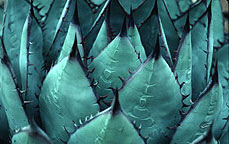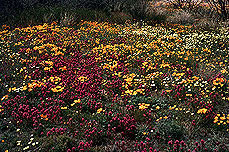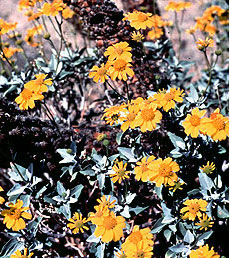Here is the article Mrs Phua showed us in class. Enjoy! :) It is not ruled out that they will replace us at a new evolution stage People all around the world were storming supermarkets and grocery stores on Christmas and New Year's Eve. There was a small group of people, though, who did not even think about eating anything for Christmas. In fact, they do not think about food at all. Such people call themselves autothrophs – they do not eat at all. The term designates an organism that makes its own food. Autotrophs can go on hunger strikes for years and even decades. Irina Novozhilova, the president of the center for protection of animals' rights, expressed her opinion about phenomenal individuals, who can live without food and water. ”The idea to turn down food as it is appeared long ago. Russian philosophers, particularly Vernadsky, were thinking about a possibility for a human being to live on something non-material. Vernadsky was certain that man is an energetic creature that can nourish himself from the energy of space. Some people can prove it today that it is possible to live a normal life without physical food. ”All living beings on our planet can be divided into two categories – autotrophs and heterotrophs. The majority of plants constitute the first category – they receive energy from non-organic substances – sunshine or air – and process it during the photosynthesis. Humans and animals make the second category: they nourish themselves with other living beings. Therefore, the people, who can live on the solar and space power, are closer to plants than to other humans. There is a group of autotrophs in Moscow. They gather in the Konstantin Vasiliev Museum, where they share experience with others. If a woman breastfeeds her child until it turns seven years old, for example, a child will be able to become an autotroph already by eight – simply and painlessly. A mother neither drinks nor eats, but she has enough milk to feed the baby. There are such women in Moscow. I often interact with people, who reject food completely. At first they become vegans - they exclude all products of animalistic origin from their menu in other words. After that they gradually turn down the vegetal food too. When people stop eating physical food, they also stop consuming any kind of liquid. They drink nothing. ”I would not say that scanty nourishment exerts a negative influence on their state of health. They are rather vigorous and cheerful people. However, I would like to warn everyone that it is impossible to quit drinking water and eating food in a moment. It should be done slowly, step by step, with short-term temporary starvation. A lethal outcome would be inevitable otherwise. A person will be killed either with starvation or their own wastes. The 70-year-old Indian yogi Pralad Djani is one of the most renowned contemporary autotrophs. This man has not been eating or drinking anything for 62 years, since the age of six. Indian doctors examined and tested him: they placed the man in a special room, outfitted the room with surveillance cameras and sealed the bathroom. As it turned out, Pralad Djani's body was functioning absolutely normally. The body was producing urine, although it was being absorbed into the urinary bladder. The yogi said that he was receiving water from air. He also said that there was a tiny hole in the palate, from which drops of “heavenly” water penetrated into his mouth. ”Russia's most famous autotroph's name is Zinaida Baranova. The old lady from the city of Krasnodar is 67 years old. She was approaching her new existence very slowly. At first she gave up meat, then she turned vegetables down. She has been living without food and water for 4.5 years already. Scientists of the Bauman Institute examined her organism and were very surprised to find out that the woman's biological age corresponded to 20 years. Professor Spiridonov came to conclusion that the pensioner was a perfectly healthy lady; all her systems and organs, except for the stomach, were functioning normally. Indeed, she is a very energetic and bubbly person. She got rid of all diseases, even chronic ones. She said, however, that it was rather hard for her to get used to the new lifestyle. She was suffering from cramps, exhaustion, dry mouth, etc. There were moments, when she thought she was dying. The woman's health improved in 1.5 months. ”Doctors say that autotrophs make a fundamentally new type of self-sufficient human beings. It is not ruled out that they will replace us at a new evolution stage. Modern science has already confirmed the ability of a human being to maintain itself. Dietitians were recently saying that the B12 vitamin was naturally contained only in animal foods. Vegans, therefore, were supposed to die, since they could not receive the vitamin. However, doctors found out that the concentration of the B12 vitamin was fine with vegans. The situation became clear, when scientists discovered the synthesis process in the intestines. It became known that human beings could live on their own microflora. Medics have already discovered that the human intestines produce microorganisms that can synthesize amino acids.” http://english.pravda.ru/science/19/94/377/14815_autotroph.html |
Friday, July 23, 2010
Autotroph Humans
Cactus Juice

Health Benefits of Cacti
There is more to the cactus plant than just a prickly house ornament to collect and admire. Medical studies conducted reveal that cactus extract contains phytochemicals, the cancer-fighting nutrient found in most fruits and vegetables, and also nutrients that strengthen the immune system.
Cactuses are drought-resistant plants found mostly in hot and dry regions. Cactus fruits are considered by some as “nature’s most perfect food”, with a large percentage of water, sugar, and minerals contained in it’s soft and gel-like flesh. The fruit performs a laxative function, increasing the frequency and ease of bowel movements. The gel extract is also used in some parts of the world as a remedy for non-insulin dependent diabetics. An experiment conducted on non-insulin dependent patients showed a significant decrease in blood glucose and insulin levels in patients who were given a cactus-water solution. Cactus extract is also a food source of phytochemicals. It enhances and strengthens the immune system’s ability to resist infection.
Nopal cactus juice is made from this desert plant's brightly colored fruit. You can use prickly pear cactus fruit for inflammation found in many areas of the body.
- Muscle
- Gastrointestinal
- Cardiovascular
- Arterial
- Bone
Nopal cactus fruit is low in calories, as well as sodium. In addition, it does not contain any cholesterol or saturated fat.
Nopalea cactus fruit nectar is also high in soluble fiber. The kind that is effective in reducing cholesterol in the blood. The American Heart Association has conducted research to measure nopal cactus fruit's ability to control cholesterol levels.
Nopal Cactus Juice Health Benefits
The nopalea cactus can provide you with the following health benefits:
- Helps you to lose weight! It curbs your appetite and blocks your body's ability to absorb fat
- Lowers your blood pressure
- Lowers your cholesterol levels! It improves your HDL / LDL ratio
- Helps to cleanse your body of harmful toxins
- Lowers your blood sugar levels
- Improves your mental focus & clarity
How do desert plants adapt to conditions in the desert?
How Plants Cope with the Desert Climate

*Highlighted points are the adaptations
Desert plants have developed three main adaptive strategies: succulence, drought tolerance and drought avoidance. Each of these is a different but effective suite of adaptations for prospering under conditions that would kill plants from other regions.
Succulence - What adaptations do they have to survive in the desert?
Succulent plants store water in fleshy leaves, stems or roots. All cacti are succulents, as are such non-cactus desert dwellers as agave, aloe, elephant trees, and many euphorbias. Several other adaptations are essential for the water storing habit to be effective.
 A succulent must be able to absorb large quantities of water in short periods.Desert rains are often light and brief, and the soil dries rapidly under an intense sun. To cope with these conditions, nearly all succulents have extensive, shallow root systems. The roots of a saguaro extend horizontally about as far as the plant is tall but are rarely more than four inches (10 cm) deep. The water-absorbing roots are mostly within the upper half inch (1.3 cm).
A succulent must be able to absorb large quantities of water in short periods.Desert rains are often light and brief, and the soil dries rapidly under an intense sun. To cope with these conditions, nearly all succulents have extensive, shallow root systems. The roots of a saguaro extend horizontally about as far as the plant is tall but are rarely more than four inches (10 cm) deep. The water-absorbing roots are mostly within the upper half inch (1.3 cm).
Succulents must be able to maintain their water hoards in a desiccating environment and use it as efficiently as possible. The stems and leaves of most species have waxy cuticles that render them nearly waterproof when the stomates are closed. Water is further conserved by reduced surface areas; most succulents have few leaves (agaves), no leaves (most cacti), or leaves that a deciduous in dry seasons (elephant trees, ocotillos, boojums).
Many succulents, as well as semisucculents such as most yuccas, epiphytic orchids, and xerophytic bromeliads, possess a water-efficient variant of photosynthesis called CAM, an acronym for Crassulacean Acid Metabolism. CAM plants open their stomates for gas exchange at night and store carbon dioxide. By day, while the stomates are closed, photosynthesis is conducted using the stored carbon dioxide. Because of the lower temperatures and higher humidity at night, CAM plants lose one-tenth as much water per unit of carbohydrate synthesized as standard C3 plants.
Another valuable attribute of CAM plants is their capability for idling metabolism during droughts. When CAM plants become water-stressed, the stomates remain closed both day and night; gas exchange and water loss nearly cease. The plant, however, maintains a low level of metabolism in the still-moist tissues. Just as an idling engine can rev up to full speed more quickly than a cold one, an idling CAM plant can resume full growth in 24 to 48 hours after a rain. Therefore, succulents can take rapid advantage of ephemeral surface moisture.
Stored water in an arid environment requires protection from thirsty animals. Most succulent plants are spiny or toxic, often both. Some protect themselves by growing only in inaccessible locations. Still others rely on camouflage. Arizona night blooming cereus, for example, closely resembles the dry stems of the shrubs in which it grows.
Now we know why plants like the cactus that grow in the desert have swollen leaves and spiky leaves. It's all for a matter of survival!
Drought Tolerance
Drought tolerance (or drought dormancy) refers to a plant's ability to withstand desiccation without dying. Plants in this category often shed leaves during dry periods and enter a deep dormancy. Most water loss is from transpiration through leaf surfaces, so dropping leaves conserves water in the stems. Some plants that do not normally shed their leaves have resinous coatings that retard water loss (e.g., creosote bush).
The roots of drought tolerant shrubs and trees are extensive compared to those of plants in wetter climates, covering an area up to twice the diameter of the canopy. They exploit the soil at greater depth than the roots of succulents; sometimes they extend to extreme depths (e.g., mesquite). Most of a mesquite's roots, however, are within three feet (0.9 m) of the surface.
(I think these type of plants do have roots that are so deep in the ground to absorb more water)
Rooting depth controls opportunities for growth cycles. In contrast to the succulents' shallow-rooted strategy, a substantial rain is required to wet the deeper root zone of shrubs and trees. After a soaking rain has fallen, shrubs such as brittlebush and creosote take a few weeks to resume full growth from deep dormancy. The tradeoff between this strategy and that of succulents is that once the deeper soil is wetted by several rains it stays moist much longer than the surface layer, supporting several weeks of growth.
Succulents can absorb water only when the soil is nearly saturated. In contrast drought tolerant plants can absorb water from soil that is much drier. Similarly these plants can photosynthesize with low leaf moisture contents that would prove fatal to most plants.
 Drought Avoidance
Drought Avoidance
Annual plants escape unfavorable conditions by not existing. They mature in a single season, then die after channeling all of their life energy into producing seeds instead of reserving some for continued survival.
Most Sonoran Desert annuals will germinate only during a narrow window in the fall, after summer heat has waned and before winter cold arrives. During this window of opportunity there must be a soaking rain of at least one inch for most species. This combination of requirements is survival insurance: an inch of rain in the mild weather of fall will provide enough soil moisture that the germinating seeds will probably mature and produce seeds even if almost no more rain falls in that season. There is still further insurance: even under the best conditions not all of the seeds will germinate; some remain dormant. Although the mechanisms are not known, a percentage of any year's crop of desert lupine seeds will not germinate until they are ten years old.
Seedlings rapidly produce rosettes of leaves during the mild fall weather, remain flat against the ground as they grow more slowly through the winter, and bolt into flower in the spring. Since the plants are inconspicuous until they begin the spring bolt, many people mistakenly think that spring rains produce our wildflower displays.
Annuals are common only in communities that have dry seasons, where the spacing of perennial plants is determined by the rooting space required to obtain enough moisture to survive the driest years. In the occasional wetter years both open space and moisture are available to be exploited by a population of fast-growing annuals. The more arid the habitat, the greater the proportion of annual species. Half of the Sonoran Desert's flora is comprised of annual species. In the driest habitats up to 90% of the plants are annuals.
The desert environment may seem hostile, but this is purely an outsider's viewpoint. Adaptations enable indigenous plants and animals not merely to survive here, but to thrive most of the time.